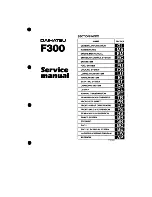
Belt status display for the rear seats (de-
pending on country and equipment)
Fig. 20 On the instrument cluster display: seat
belt status for the rear seats.
After the ignition has been switched on, the
on the instru-
ment cluster display shows the driver wheth-
er the adult rear seat passengers have fas-
tened their seat belts.
The following symbols light up in different
colours depending on whether seats are oc-
cupied and on the belt status:
The red symbol indicates that the
passenger on this seat has not fas-
tened their seat belt.
The green symbol indicates that the
passenger on this seat has fastened
their seat belt.
The white symbol indicates that this
seat is not occupied.
Buckle-up request for the rear seats (de-
pending on country and equipment)
If a seat belt for one of the rear seats is un-
fastened while the vehicle is in motion, the
symbol will light up red continuously for this
seat. The red warning lamp also flashes on
the instrument cluster display. If the vehicle
is travelling faster than around 25 km/h
(around 15 mph) an acoustic signal will also
be given for 126 seconds.
WARNING
Incorrectly fastened or unfastened seat
belts increase the risk of severe or fatal in-
juries. Seat belts will only offer the opti-
mum level of protection when they are fas-
tened and used properly.
WARNING
The buckle-up request is designed to de-
tect adult persons. If a seat is occupied by
lighter persons, in particular children, the
detection will not be reliable. The buckle-
up request also does not respond or only in
a limited way if child seats and seat sup-
ports are used.
·
Always ensure that all vehicle occupants,
especially children, have fastened their
seat belts properly.
Frontal collisions and the
laws of physics
Please refer to at the start of the chap-
Fig. 21 Unbelted occupants in a vehicle head-
ing for a brick wall.
Fig. 22 Unbelted occupants in a vehicle head-
ing for a brick wall.
The physical principles involved in a frontal
collision are relatively simple. As soon as the
38
Safety
















































